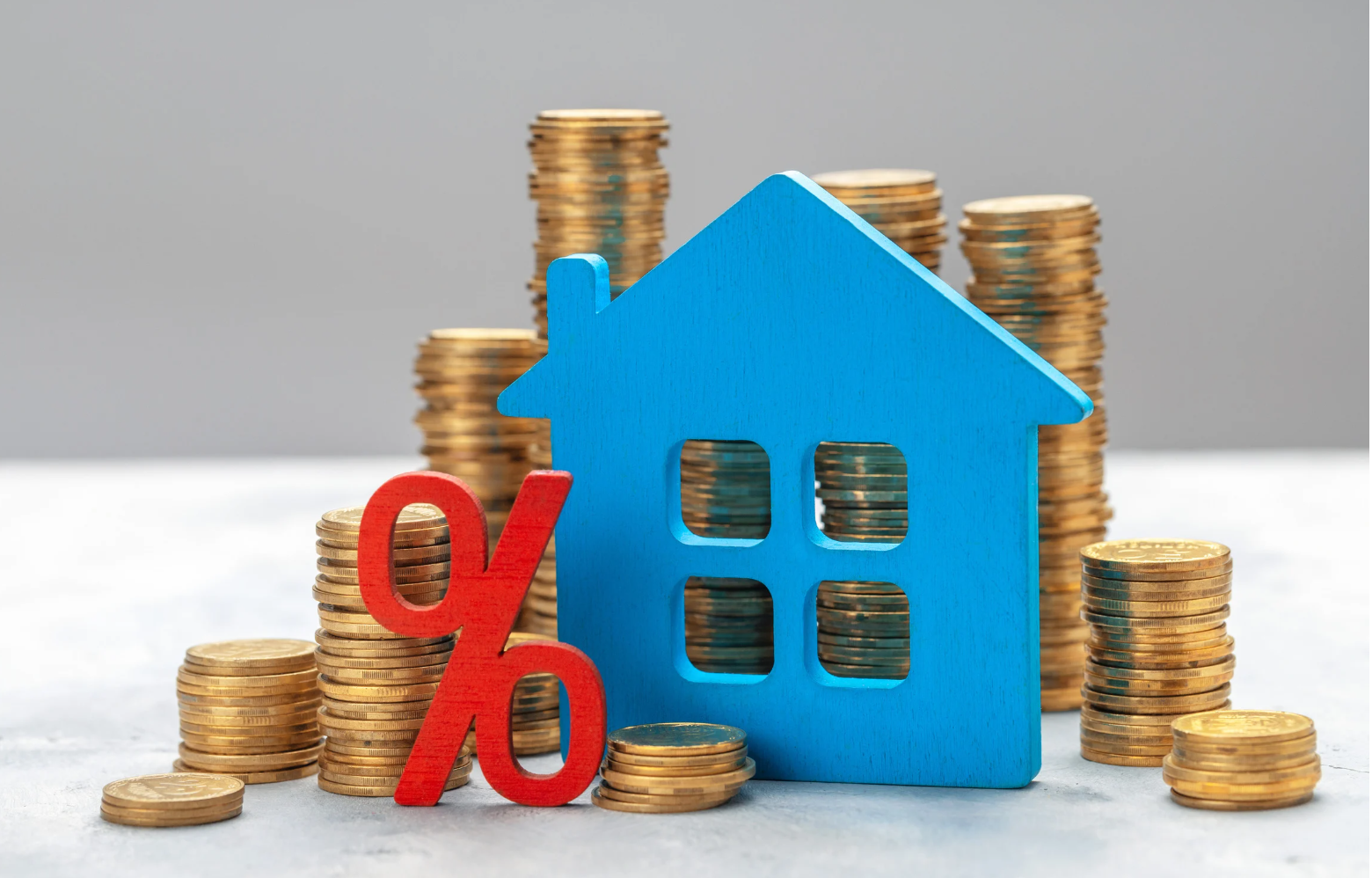Published October 3, 2025
The ROI of Home Staging: Why Investing in Your Home's Presentation Pays Off

When preparing to sell your home, you might be tempted to list it as-is and save the hassle of decluttering, rearranging furniture, or investing in staging services. However, this could be one of the costliest decisions you make in the selling process. Home staging—whether traditional or virtual—has proven to be one of the most effective strategies for maximizing your sale price and minimizing time on market.
The Financial Impact of Staging
The numbers speak for themselves. According to the National Association of Realtors' 2023 Profile of Home Staging, 81% of buyers' agents reported that staging makes it easier for buyers to visualize a property as their future home, and 20% of sellers' agents indicated that staging increases the dollar value offered by buyers between 1% and 5%.
Let's put this into perspective with a real-world example. On a $400,000 home, even a conservative 3% increase in sale price equals an additional $12,000. If your staging investment costs $2,000-$4,000 for traditional staging or just $300-$600 for virtual staging, you're looking at a net gain of $8,000-$11,700. That's a return on investment that few other home improvements can match.
The same NAR study found that 23% of sellers' agents reported an increase of 6% to 10% in the dollar value offered when the home was staged. On that same $400,000 property, a 6% increase would mean an additional $24,000—making staging one of the highest-ROI investments in real estate.
Speed Matters: Reducing Time on Market
Beyond the sale price, staging dramatically impacts how quickly your home sells. Research from the Real Estate Staging Association indicates that staged homes spend 73% less time on the market compared to non-staged homes. This isn't just a convenience factor—every additional month your home sits on the market costs you money in mortgage payments, utilities, insurance, and maintenance.
Consider this scenario: If your carrying costs are $2,500 per month and staging helps you sell three months faster, that's $7,500 saved—often exceeding the cost of staging itself. Additionally, homes that linger on the market often raise red flags for buyers, potentially leading to lower offers as sellers become increasingly motivated to close the deal.
The Psychology Behind Staging
Why does staging work so effectively? The answer lies in human psychology and the limitations of imagination. NAR's research shows that staging specifically affects buyers' views of the home itself, helping them see the property as their future residence rather than just empty rooms or someone else's personal space.
Buyers touring homes make snap judgments—often within the first few minutes or even seconds. A well-staged home creates an emotional connection that transcends the physical features of the property. It showcases the lifestyle potential rather than just square footage, helping buyers justify higher offers based on how the home makes them feel.
Professional stagers understand traffic flow, furniture scale, color psychology, and how to highlight a home's best features while minimizing any drawbacks. They create focal points that draw the eye, use lighting to enhance ambiance, and employ design principles that make spaces feel larger, brighter, and more inviting.
Virtual Staging: The Cost-Effective Alternative
For sellers working with tighter budgets or vacant properties, virtual staging has emerged as a game-changing solution. Virtual staging involves digitally adding furniture and decor to photographs of empty rooms, with costs typically ranging from $39 to $199 per image, making it significantly more affordable than traditional staging which can cost $2,000-$6,000 or more.
While virtual staging can't replace the experience of walking through a physically staged home, it excels in the crucial first impression phase. Since most homebuyers begin their search online, those listing photos are your first—and sometimes only—chance to capture their attention. Studies show that virtually staged homes receive more online views and generate more showing requests compared to listings with empty room photos.
The best approach often combines both methods: use virtual staging for online listings to attract maximum attention, then ensure the physical home is at least decluttered, deep-cleaned, and neutrally presented for in-person showings.
Staging Different Types of Properties
The impact of staging varies by property type and market condition, but virtually all homes benefit:
Vacant homes benefit most dramatically from staging. Empty rooms photograph poorly, making spaces appear smaller and less inviting. Without furniture to provide scale, rooms can feel awkward and unwelcoming. NAR reports that buyer's agents believe staging the living room, master bedroom, and kitchen are most important, as these are the spaces where buyers spend the most time and form their strongest impressions.
Occupied homes require a different approach—editing rather than creating. This involves depersonalizing spaces, removing excess furniture to improve flow, neutralizing bold color choices, and strategically adding or rearranging pieces to optimize the space. While sellers may need to temporarily adjust their lifestyle, the financial payoff typically justifies the temporary inconvenience.
Luxury properties almost universally require professional staging. High-end buyers expect to see homes presented at their absolute best, and the competition in this market segment is fierce. The staging investment, while higher in absolute dollars, represents a much smaller percentage of the sale price while potentially influencing buyers considering multiple properties.
The Numbers: A Practical Example
Let's examine a complete cost-benefit analysis for a $350,000 home:
Without Staging:
- Sale price: $350,000
- Time on market: 60 days
- Carrying costs (2 months): $5,000
- Net proceeds: $345,000 (after carrying costs)
With Traditional Staging:
- Staging cost: $3,500
- Sale price: $361,000 (3% increase)
- Time on market: 20 days
- Carrying costs (3 weeks): $1,875
- Net proceeds: $355,625
- Net gain: $10,625
With Virtual Staging:
- Virtual staging cost: $500
- Sale price: $357,000 (2% increase)
- Time on market: 30 days
- Carrying costs (1 month): $2,500
- Net proceeds: $354,000
- Net gain: $9,000
These calculations become even more compelling in competitive markets or when dealing with higher-priced properties where percentage increases translate to substantially larger dollar amounts.
Best Practices for Maximum ROI
To get the most from your staging investment:
-
Start with professional photography—even the best staging won't help if the photos don't do it justice. Professional real estate photography is essential for capturing the staged home's appeal.
-
Focus on key rooms—you don't need to stage every room. Concentrate on the living room, master bedroom, kitchen, and main bathroom where buyers form their strongest impressions.
-
Keep it neutral—staging should appeal to the broadest possible audience. Save bold colors and personal style for your next home.
-
Maintain the staging—if your home is occupied, keep it in showing condition throughout the listing period. The effort pays off in higher offers.
-
Consider your market—in hot markets with low inventory, minimal staging might suffice. In slower markets or with homes that have been sitting, comprehensive staging becomes even more critical.
-
Disclose virtual staging—be transparent when using virtual staging for listing photos. Most MLS systems require disclosure, and honesty builds trust with potential buyers.
The Bottom Line
Home staging—whether traditional or virtual—isn't an expense; it's an investment with measurable returns. The data consistently shows that staged homes sell faster and for more money than non-staged properties. When you factor in both the increased sale price and reduced carrying costs, staging often pays for itself several times over.
In a real estate transaction involving hundreds of thousands of dollars, spending a few thousand on staging is a relatively small investment that can yield significant returns. The question isn't whether you can afford to stage your home—it's whether you can afford not to.
Whether you choose full traditional staging, virtual staging, or a hybrid approach, presenting your home in its best possible light gives you a competitive advantage in attracting buyers and commanding top dollar. In the competitive world of real estate, that advantage can translate directly to thousands of dollars in your pocket at closing.





